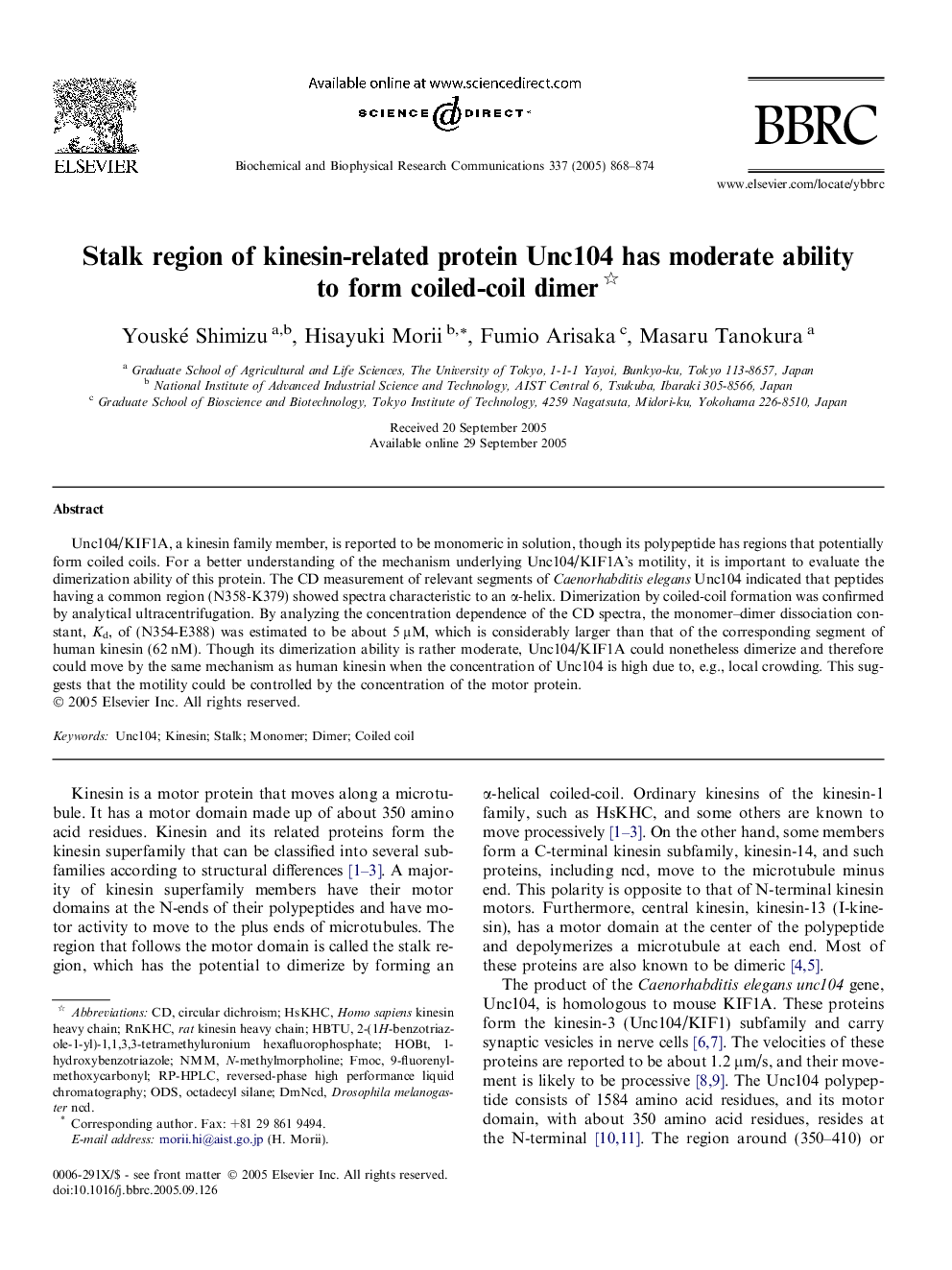| Article ID | Journal | Published Year | Pages | File Type |
|---|---|---|---|---|
| 10767641 | Biochemical and Biophysical Research Communications | 2005 | 7 Pages |
Abstract
Unc104/KIF1A, a kinesin family member, is reported to be monomeric in solution, though its polypeptide has regions that potentially form coiled coils. For a better understanding of the mechanism underlying Unc104/KIF1A's motility, it is important to evaluate the dimerization ability of this protein. The CD measurement of relevant segments of Caenorhabditis elegans Unc104 indicated that peptides having a common region (N358-K379) showed spectra characteristic to an α-helix. Dimerization by coiled-coil formation was confirmed by analytical ultracentrifugation. By analyzing the concentration dependence of the CD spectra, the monomer-dimer dissociation constant, Kd, of (N354-E388) was estimated to be about 5 μM, which is considerably larger than that of the corresponding segment of human kinesin (62 nM). Though its dimerization ability is rather moderate, Unc104/KIF1A could nonetheless dimerize and therefore could move by the same mechanism as human kinesin when the concentration of Unc104 is high due to, e.g., local crowding. This suggests that the motility could be controlled by the concentration of the motor protein.
Keywords
Related Topics
Life Sciences
Biochemistry, Genetics and Molecular Biology
Biochemistry
Authors
Youské Shimizu, Hisayuki Morii, Fumio Arisaka, Masaru Tanokura,
